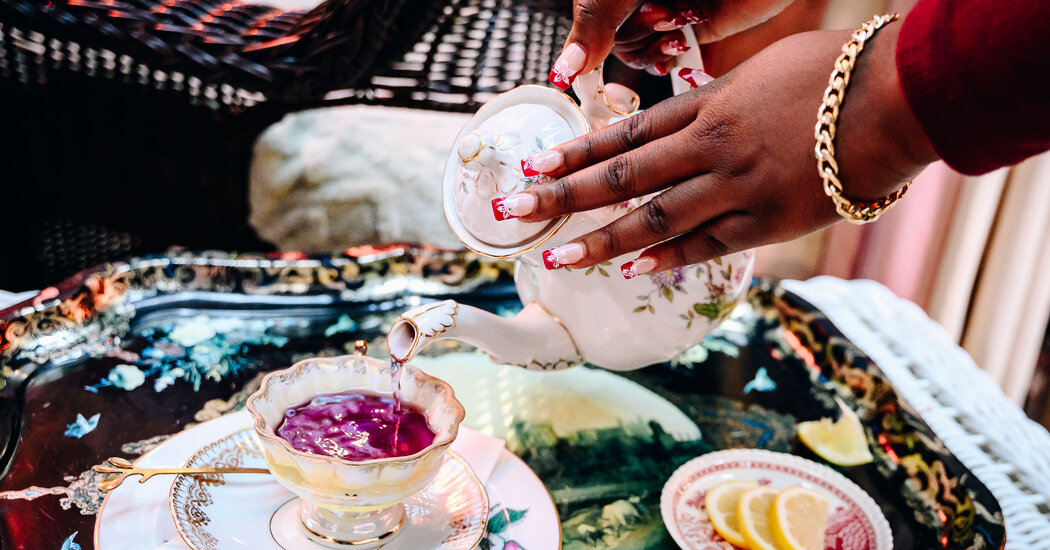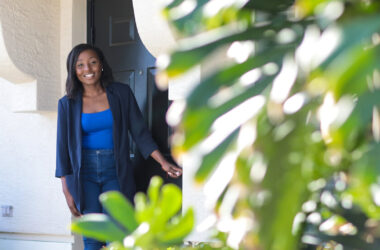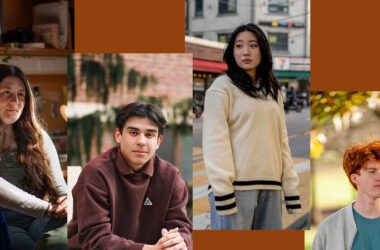Phoebe Cheong and Jude Andam, friends who live on opposite coasts, have recently begun a tradition whenever they see each other.
They have tea.
On a recent afternoon, Ms. Andam, a makeup artist in Los Angeles, joined Ms. Cheong, a commercial photographer, at Lady Mendl’s Tea Salon, which occupies the parlor floor of a Georgian townhouse in the Gramercy Park neighborhood of Manhattan.
The two friends might have met for coffee or lunch, but they prefer the more formal experience of tea.
“Coffee shops are casual,” Ms. Andam, 42, said. “You go in there in your athleisure or whatever. This is more of a special occasion.”
Ms. Cheong, 31, noted the maximalist décor at Lady Mendl’s, which includes Victorian fringe lamp shades and gold-leaf on the molding. She also appreciated how the server announced that the topping for their scones was Devonshire cream.
“Here there’s mystery, there’s storytelling,” Ms. Cheong said.
Elaborate afternoon tea service is a main attraction at more than a dozen venues in New York and Los Angeles. At Brooklyn High Low, which has two locations near Prospect Park, it’s $48 for the “Classic” prix fixe tea service, which lasts 75 minutes. At Rose Tree Cottage in Pasadena, Calif., a man in a tuxedo serves cucumber sandwiches and sticky toffee pudding. The three New York locations of Alice’s Tea Cup have an “Alice in Wonderland” theme.
It is a curious fact that, in a decidedly uncivil time, when people have grown accustomed to arguing with strangers on social media and wearing sweats on the plane, this high ritual has made something of a comeback.
A new service in New York, Tea Around Town, hosts afternoon tea aboard a pink and white double-decker bus for those who would like to take in the sights while sipping organic Earl Grey with lavender. The bus’s interior has soft pink banquettes in place of the seating one might find on a Greyhound.
That rolling salon joins longtime standbys known for elaborate tea service — a group of establishments that includes The Peninsula Beverly Hills, the London West Hollywood and The Plaza Hotel. The Palm Court at the Plaza looks much the same as tea salons did in the 1920s, when tables were divided by large palms, creating rooms within a room where guests may be inclined to share their most intimate thoughts.
Bruce Richardson, the master blender at Elmwood Inn Fine Teas in Danville, Ky., and the co-author of “A Social History of Tea,” has been tracking the tea scene for some 30 years.
“I was just in London last month,” Mr. Richardson said. “Boy, every hotel is having afternoon tea again, even more than 20 years ago. There’s a real resurgence of customers looking for that sit-down teatime.”
Mr. Richardson, 70, put forth a theory as to why afternoon tea, which took hold as a tradition among the English gentry in the 1840s, has persevered in the modern world. “In the tea-making ritual,” he said, “we rediscover our humanity, which has become obscured amid a life that is often moving too fast and filled with too much.”
Honey Moon Udarbe, the proprietor of Brooklyn High Low, said that she used to take tea by herself as a kind of escape, and later did so with her daughters and friends, before she opened her first salon in the Prospect Heights neighborhood, in 2020.
Business has been so good that Ms. Udarbe, 47, recently saw fit to open a second teahouse 12 blocks away from the original location. The new salon — called Brooklyn High Low, the Parlor — can be found on the ground floor of a brownstone in Park Slope. She calls it a “speak-teasy,” because she does no advertising.
“I like this nostalgic moment of unplugging and sitting down and chatting with people,” Ms. Udarbe said. She went on to say that a tearoom has much in common with the corner bar, only it manages to encourage a sense of camaraderie “without the booze.”
Mary Fry opened Rose Tree Cottage, a teahouse in Southern California, 50 years ago with her British husband, Edmund. They created a time-warp atmosphere not only by having Edmund don tux-and-tails whenever he serves customers, but by seeing to it that digital devices have no place at the table.
“Let me just say that we make you turn your phones off,” Ms. Fry said. “You cannot be watching the Dodger game and having tea. It’s a time to calm yourself and enjoy conversation with family and friends and bring yourself down to where your brain should be.”
Perhaps that is why her salon has been bustling lately, and why she has noticed many guests in their twenties and thirties. They arrive wearing fancy hats and fascinators — the formal headpieces popularized by Kate Middleton. In its gift shop, Rose Tree Cottage stocks a variety of elaborate hats and fascinators in pink, yellow, green and blue, along with jackets from the British clothier Barbour.
“My husband called it a sanctuary,” Ms. Fry said. “It’s a sanctuary in a mad, crazy world that’s going on right now. People want to escape with something traditional.”
In a separate interview, Ms. Udarbe made much the same point.
“Really,” she said, “the basis of afternoon tea is time. It’s escaping the iPhone or subway or your job or whatever runs you ragged. I had some lady come in and tell me it really is self-care.”
Proponents of the trend note that a teahouse is quite unlike a cafe or restaurant, in which one might be assaulted by the din of clattering silverware or pop music blasting out of ceiling speakers.
“Someone has taken the time to make this a setting that is conducive to beautiful talk and remembrances,” Mr. Richardson, the tea expert, said. “It could be like going into a cathedral. There’s just a presence that you feel there.”
At Floating Mountain Tea House on the Upper West Side of Manhattan, the tea ceremony has a meditative aspect influenced by Chinese and Japanese tea culture. Guests are asked to remove their shoes upon entering the sparsely furnished room, where they may choose from 67 teas sourced from China. A special service, on Saturdays and Sundays, involves sitting on the floor and drinking tea in silence.
“Customers come here out of curiosity and they experience something they’ve never experienced before,” Elina Medvedeva, the owner, said. “The energy is so serene.”
No food is served. The idea is spiritual nourishment. “The space which I’m providing for you allows you to connect with yourself,” said Ms. Medvedeva, 48.
Though peaceful in its own way, Lady Mendl’s, with its stuffed parlor furniture, upright piano and portrait of Queen Elizabeth, evokes a different mood. Tea service, at $78 per person, begins with a selection of teas, followed by snacks, including finger sandwiches and scones. The salon fairly guarantees an atmosphere conducive to mature discourse through a policy that forbids entry to children under age 12.
While social media channels have lately been brimming with arguments over wars and the election to come, a major debate at the Manhattan salon on a recent afternoon was the age-old question of what to put on one’s scone first: clotted cream or jam. At Lady Mendl’s, it is suggested that the cream go first.
Two women at a back table were celebrating their pregnancies. Ms. Cheong and Ms. Andam, seated near the piano, lingered over cups of Wonderland Rooibos, a tea variety with hints of chocolate. They talked until the 4 p.m. closing time. No hovering staff member pressured them to leave.
“In a coffee shop, everyone is working,” Ms. Andam said as she and her friend stepped out of the tranquil townhouse and into the noise of New York. “When does anyone take time to do this?”



